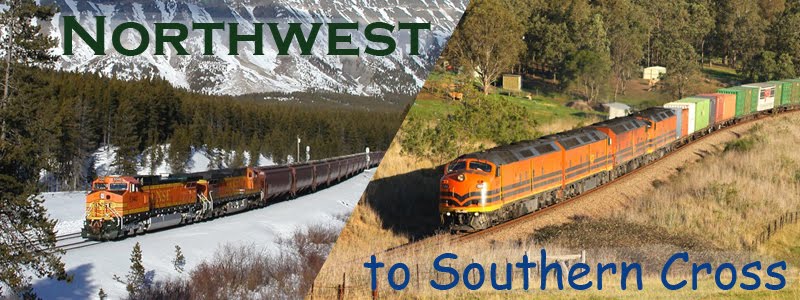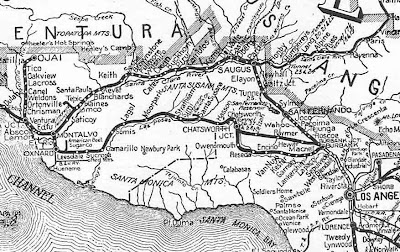Now what to do with them?
I made the decision at that point to model fairly current operations in New South Wales (probably because I spent most of my gunzeling time in NSW), but where to focus? I spent my time there on the Main West to Parkes and the Main South to Junee...both provided enough traffic and variety to make modeling interesting....but both had significant sections of double main line, which would complicate the modeling and reduce the amount of line I could model in the space available.
In the books & magazines I acquired, I started reading about the Main North from Maitland to the Northwest of the state. Mostly single line working with Grain, coal, goods...multiple operators, AND ..... Bankers! (helpers or pushers to the yanks among us) A quick mail order purchase of 2 Ardglen Banker DVD's pretty much made up my mind, but the below video found on YouTube sealed the deal:
It just can't get any better than that!! Alcos front and rear and mountain scenery...everything that I've always loved.
I started pouring over the ARTC website for track charts, maps and schedules and made an AMAZING discovery. The layout I had build for my Santa Paula Branch of the SP, would convert with virtually no changes to the line between Muswellbrook and Werris Creek!!!!
I just had to lengthen a couple of passing loops and remove 17 goods sidings and 1965 Southern California became 2006 Northwest New South Wales.
In the track plan below, Maitland Staging was Los Angeles, Willow Tree was Fillmore (the town I grew up in, Werris Creek was Oxnard, and Tamworth / Narrabri Staging was Northern California staging.
In the drawings, not all sidings are show.
The original railroad had a significant grade to transition from the main level to the upper level. On The SP model, the grade had to be ignored since it wasn't there on the prototype...trains had to be powered up enough to climb it unassisted:
But it fell in the perfect position for Ardglen Bank, and, since I'm modeling current times and there isn't any loose goods business, the grade and use of bank engines will become the focal point of the new railroad:
Next up....I'll do a little cleaning and share a few photos of the current state of the railway.

















